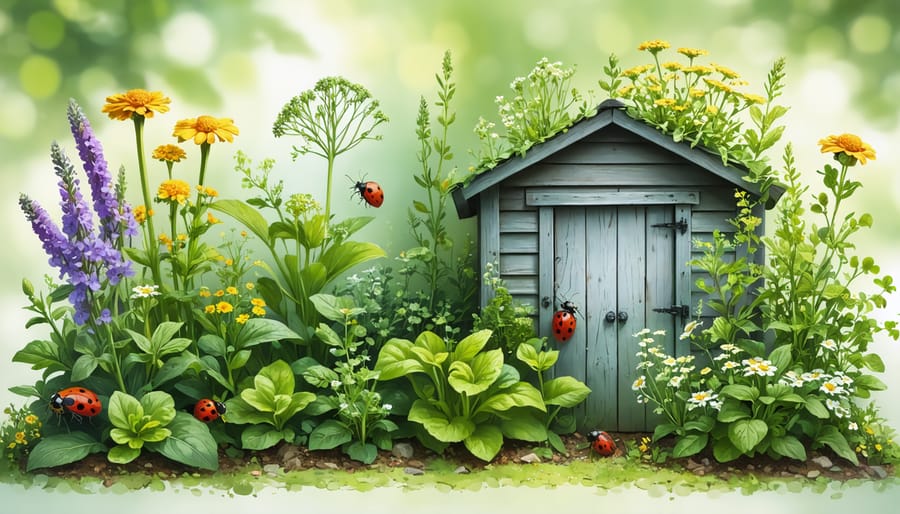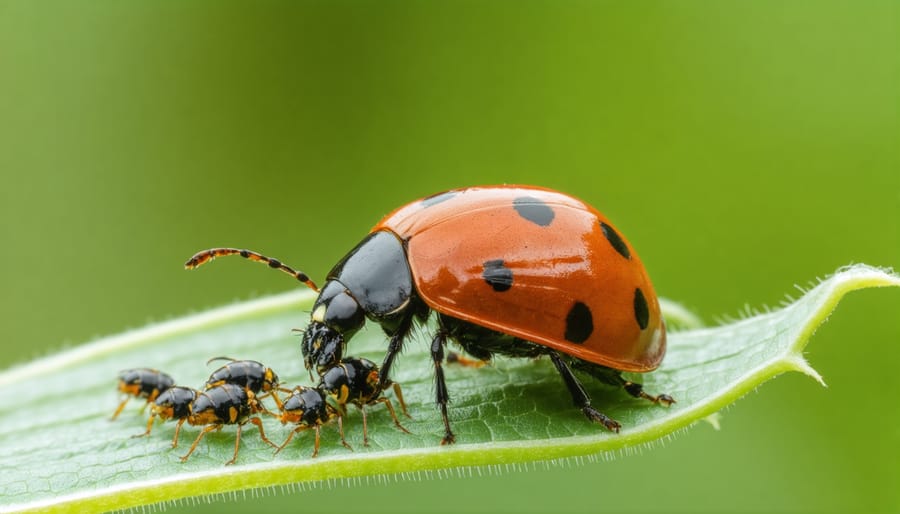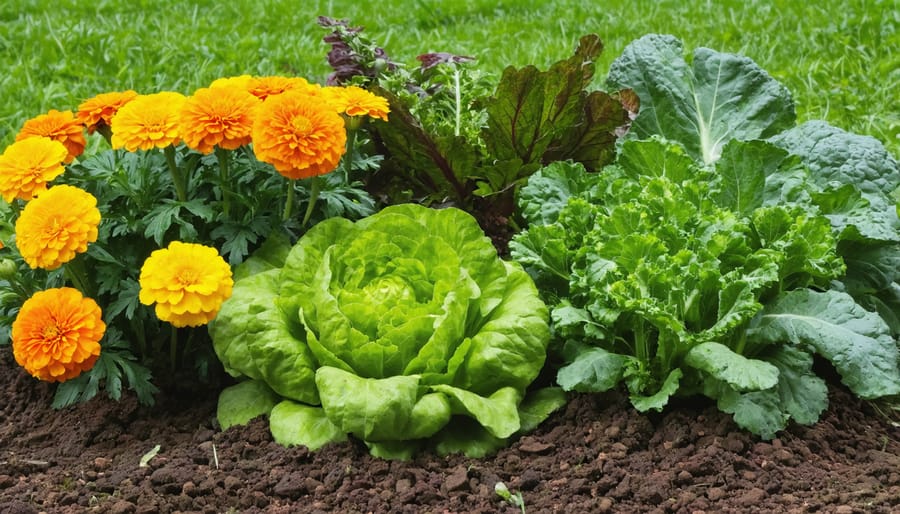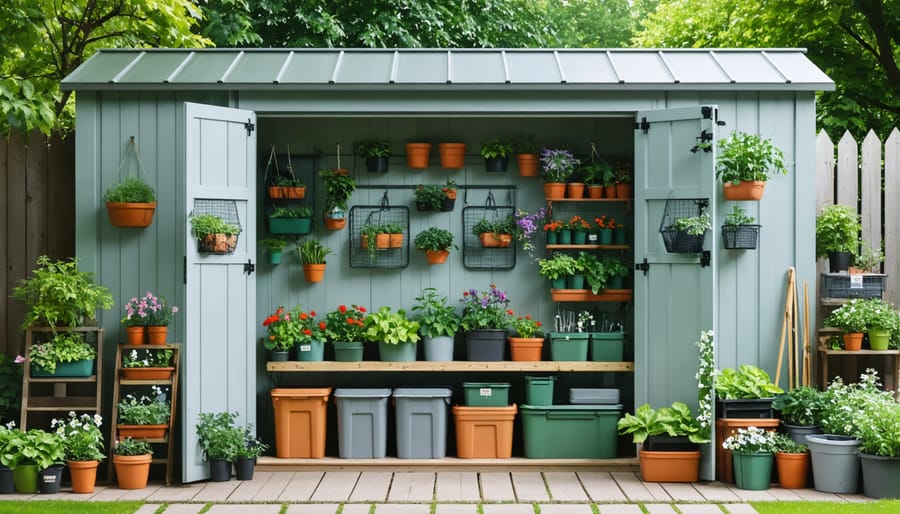Natural Pest Control That Actually Works: Safe Solutions for Your Shed and Garden

Transform your garden into a pest-resistant sanctuary by integrating natural deterrents like neem oil, diatomaceous earth, and companion planting. Create barriers using copper tape around plant bases and install beneficial insect houses to establish a balanced ecosystem that naturally controls harmful pests. Master environmentally-friendly pest prevention through strategic plant placement, maintaining proper air circulation, and removing standing water that attracts unwanted insects.
Combat existing pest problems using potent natural solutions like garlic and hot pepper sprays, which effectively repel multiple pest species without harming beneficial insects or contaminating your soil. These proven methods protect your garden’s biodiversity while maintaining a chemical-free environment safe for children, pets, and wildlife. Implementing these natural strategies creates a sustainable, thriving garden ecosystem that naturally resists pest infestations while promoting healthy plant growth.
Common Garden Pests and Their Natural Predators
Identifying Beneficial Insects
Beneficial insects are nature’s pest control experts, and learning to identify them can make a huge difference in your garden’s health. Ladybugs, with their distinctive red and black spotted wings, are voracious aphid hunters – a single ladybug can devour up to 5,000 aphids in its lifetime! Look for these cheerful little beetles and their larvae, which resemble tiny black and orange alligators.
Praying mantises are easy to spot with their triangular heads and long, folded front legs. These patient predators will eat virtually any pest that crosses their path, from caterpillars to beetles. Their tan or green coloring helps them blend perfectly with plants.
Parasitic wasps might sound scary, but these tiny, non-stinging insects are garden allies. Most are smaller than a grain of rice and can be identified by their narrow waists and long antennae. They lay their eggs in common pests like tomato hornworms and cabbage worms, naturally controlling these populations.
To attract these helpful creatures, plant flowers like dill, yarrow, and marigolds throughout your garden. Provide shallow water sources and avoid using chemical pesticides that might harm these beneficial insects.

Creating a Pest-Predator Balance
Creating a balanced ecosystem in your garden is one of the most effective ways to naturally control pest populations. Start by attracting beneficial insects like ladybugs, praying mantises, and parasitic wasps by planting flowers such as marigolds, dill, and yarrow. These helpful predators will naturally keep pest numbers in check without harming your garden.
Consider installing bird feeders and baths to encourage local birds, which are excellent natural pest controllers. Creating habitats for beneficial creatures like toads and lizards by providing shallow water sources and ground cover can also help maintain pest balance.
Companion planting is another powerful strategy. Plant aromatic herbs like basil, mint, and lavender near your vegetables to confuse and deter unwanted insects. Meanwhile, maintain healthy soil by adding organic matter and avoiding chemical pesticides, which can harm beneficial insects and disrupt the natural balance.
Remember that some pest presence is normal and even beneficial – it ensures predator populations stick around. The goal isn’t to eliminate all pests but to maintain a healthy balance where natural predators keep pest populations at manageable levels.
Plant-Based Pest Deterrents
Companion Planting Strategies
One of the most effective sustainable gardening practices is companion planting, where specific plant combinations naturally deter unwanted pests. Marigolds are garden superheroes, protecting tomatoes and other vegetables from nematodes while adding bright splashes of color. Plant basil near tomatoes to repel hornworms and mosquitoes, while improving tomato flavor. Nasturtiums act as sacrifice plants, attracting aphids away from your valuable crops while providing edible flowers.
For root vegetable protection, try planting carrots with onions and leeks – their strong scents confuse and deter carrot flies. Herbs like mint, rosemary, and lavender not only provide cooking ingredients but also naturally repel many common garden pests. Just remember to contain spreading herbs like mint in pots to prevent them from taking over.
Create these plant partnerships throughout your garden beds, and you’ll build a natural defense system that works round the clock while enhancing your garden’s beauty and productivity.

DIY Herbal Sprays
Create these effective herbal sprays using ingredients from your kitchen and garden for natural pest control. Mix 2 cups of water with 10-15 drops of peppermint essential oil for a powerful ant and spider deterrent. For aphids and soft-bodied insects, steep fresh rosemary and lavender in boiling water for 30 minutes, strain, and add a drop of natural dish soap.
A garlic and chili spray offers robust protection against multiple pests. Blend 4-5 garlic cloves and one hot pepper with two cups of water, let it sit overnight, then strain and spray. For fungal issues, try a neem oil solution – mix one tablespoon of neem oil with two cups of water and a drop of natural soap.
Store your homemade sprays in dark glass bottles and label them clearly with ingredients and dates. Reapply these natural solutions weekly or after rain for best results. Remember to test sprays on a small area first, as some plants may be sensitive to certain herbs. These DIY solutions are safe for beneficial insects like bees and ladybugs while effectively deterring unwanted pests.
Physical Barriers and Traps
Smart Storage Solutions
Protecting your garden supplies while keeping pests at bay starts with implementing smart, eco-friendly storage solutions. Begin by elevating storage containers at least six inches off the ground using sturdy shelving or pallets. Opt for airtight, BPA-free containers with secure lids for storing seeds, soil amendments, and gardening tools. Weather-strip your shed’s doors and windows, and seal any gaps or cracks with natural caulking materials.
Install mesh screens over vents and openings to prevent insects and rodents from entering while maintaining proper airflow. Consider adding cedar blocks or lavender sachets near entry points, as these natural deterrents help repel many common pests. Keep your storage area clean and organized, regularly sweeping floors and wiping down surfaces with vinegar-based solutions.
Maintain a dry environment by addressing any leaks promptly and using moisture-absorbing products like silica gel or rice in sealed containers. Remember to store garden harvests and compostable materials in separate, well-ventilated areas to avoid attracting unwanted visitors.

Garden Barrier Methods
Physical barriers offer a simple yet effective way to protect your garden from unwanted pests without using harmful chemicals. Garden netting, when properly installed, keeps birds and larger insects away from your precious crops while still allowing sunlight and rain to reach your plants. For ground-dwelling pests, copper tape creates an effective barrier that snails and slugs won’t cross.
Installing raised bed barriers or hardware cloth beneath your garden beds prevents burrowing animals from accessing your plants from below. Floating row covers provide an excellent dual-purpose solution, protecting plants from insects while extending your growing season by creating a warmer microclimate.
For larger pests like rabbits and deer, consider installing a perimeter fence at least 3 feet high, buried 6-12 inches deep to prevent digging. Remember to maintain your barriers regularly, checking for tears or gaps that might compromise their effectiveness. These physical deterrents work best when combined with other eco-friendly pest management strategies.
By embracing eco-safe pest control methods, you’re not just protecting your home and garden – you’re contributing to a healthier environment for everyone. Natural deterrents, beneficial insects, and proper maintenance practices offer effective alternatives to harsh chemicals, proving that sustainable pest management is both possible and practical. Remember to start with prevention, choose natural solutions when needed, and maintain regular monitoring of your space. By implementing these environmentally conscious strategies, you can successfully manage pests while keeping your family, pets, and local ecosystem safe. Take the first step today toward a more sustainable approach to pest control, and enjoy the peace of mind that comes with choosing earth-friendly solutions for your home and garden.

